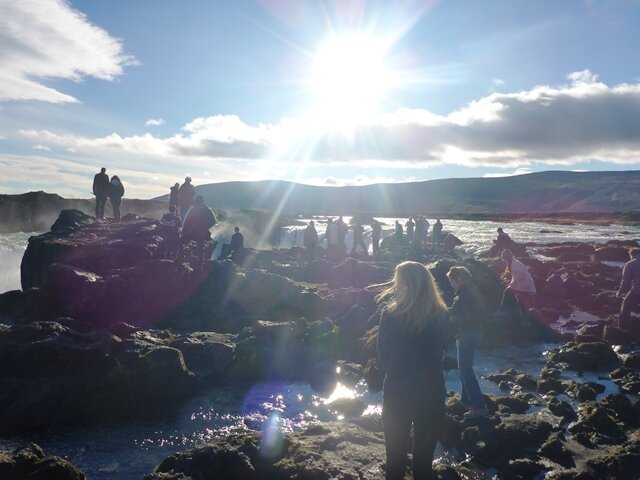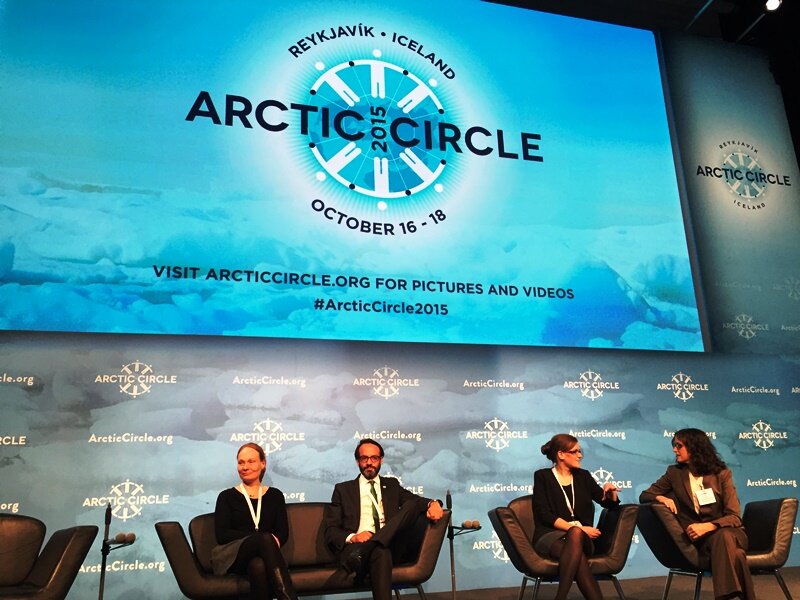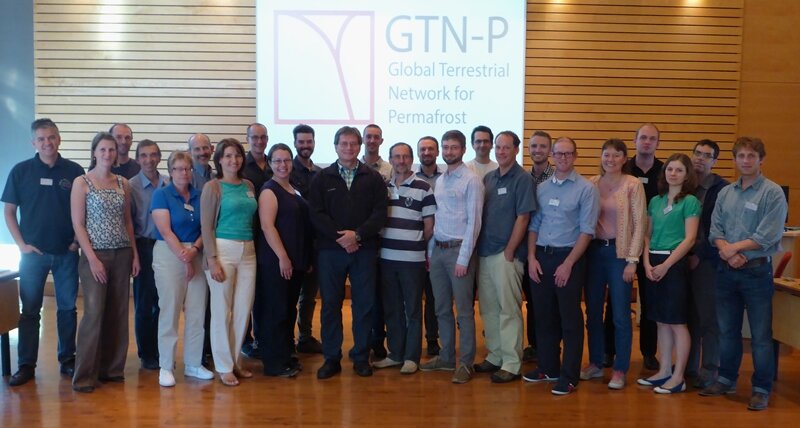EUCOP 4 now ended
- Details
- Created on Tuesday, 24 June 2014 12:46
 The fourth European Conference on Permafrost has now ended. PAGE21 was represented by 26 oral and poster presentations and an active participation in organizing the Permafrost Young Researchers Workshop that took place prior to the conference in Evora.
The fourth European Conference on Permafrost has now ended. PAGE21 was represented by 26 oral and poster presentations and an active participation in organizing the Permafrost Young Researchers Workshop that took place prior to the conference in Evora.
All abstracts from the conference are collected to an electronic Book of Abstracts, which contains 425 diabetes hgh abstracts, including those from the 3 plenary lectures, 1 from The Wiley - Blackwell Permafrost and Periglacial Processes Public Lecture and 23 session keynote lectures.
The next big permafrost event will be the 11th International Conference on Permafrost (ICOP) that will be held 20-24 June 2016 in Potsdam, Germany.
Permafrost Young Researchers Workshop at the EUCOP 4 in Evora Portugal
- Details
- Created on Friday, 20 June 2014 11:36
 Permafrost Young Researchers Workshop (PYRW) was organized on Wednesday June 19, just prior to the 4th European Conference of Permafrost, which currently going on in Evora Portugal.
Permafrost Young Researchers Workshop (PYRW) was organized on Wednesday June 19, just prior to the 4th European Conference of Permafrost, which currently going on in Evora Portugal.
The organization of the workshop was a joint effort of Permafrost Young Researchers Network (PYRN), Association of Polar Early Career Scientists (APECS) and the young researcher representatives of the two projects PAGE21 (Changing Permafrost in the Arctic and its Global Effects in the 21st Century) and ADAPT (Arctic Development and Adaptation to Permafrost in Transition).
 The workshop preparation started already a year ago with 12 organizing young scientists from 6 different countries and and as financially supported by International Permafrost Association (IPA), Climate and Cryosphere (CliC), International Arctic Science Comittee (IASC) and Bolin Centre for Climate Research in Sweden.
The workshop preparation started already a year ago with 12 organizing young scientists from 6 different countries and and as financially supported by International Permafrost Association (IPA), Climate and Cryosphere (CliC), International Arctic Science Comittee (IASC) and Bolin Centre for Climate Research in Sweden.
Student support was provided by both PAGE21 and ADAPT projects, both of which have a very active young researcher body within the projects.
The main aim of the workshop was to build interdisciplinary knowledge on how the Arctic and Antarctic permafrost regions play a key role in the Earth System and to give each participant a more overarching view on the regions beyond disciplinary research questions.
The workshop had 17 invited mentors and guest scientists, 3 keynote presentations, 12 breakout sessions and an ICARP III - 3rd International Conference on Arctic Research Planning activity - in a World Café format in which the young researchers participated in formulating the most topical future permafrost research questions.
At the end of the workshop a PYRN assembly selected new PYRN Executive Committee, which will take on the planning of the permafrost YR activities, and especially the YR activities at the 11th ICOP in Potsdam, Germany in 2016 with a lot of enthusiasm.
PAGE21 young researchers at EUCOP 2014: Sarah Chadburn
- Details
- Created on Thursday, 19 June 2014 13:44
 Today we are honoured to present Sarah Chadburn, researcher from University of Exeter.
Today we are honoured to present Sarah Chadburn, researcher from University of Exeter.
During the Conference and Young Researchers Workshop, Sarah explains what her project is all about.
JULES is a global land surface model. It simulates vegetation, soil and transfer of energy and water, from the atmosphere, into and out of the land surface, and through the soil.
JULES simulates freezing and thawing and so we can use it to simulate permafrost across the whole globe.
If we run the model into the future, using atmospheric data from a climate model, we can show how the permafrost area decreases with future climate warming.
This case is a low-emissions scenario, and we still see a significant loss of permafrost.
I have added in new processes to improve the model. These include a representation of moss cover on top of the soil, and organic matter in the soil, which provide thermal insulation.
We are also simulating deeper soil, to make the temperature dynamics more realistic.
Watch the Frostbyte video to get better understanding of Sarah´s project.
Frostbyte S Chadburn: Global permafrost modelling with JULES from Climate and Cryosphere on Vimeo.
New version of CyoGridEdu is now available
- Details
- Created on Friday, 13 June 2014 10:57
 PAGE21 Snow – Permafrost Interaction Soil Model – CryoGridEdu has now been updated. New versions of CryoGridEdu programs are now available for various operating systems.
PAGE21 Snow – Permafrost Interaction Soil Model – CryoGridEdu has now been updated. New versions of CryoGridEdu programs are now available for various operating systems.
CryoGridEdu allows two different types of input data that are used as an external forcing for the soil model. On the one hand you can generate tailored data with a sinusoidal temperature curve and a trapezoid shaped snow depth curve.
On the other hand you can also load files with measured temperatures and snow depth or snow water equivalent.
CryoGridEdu was developed by Dr. Moritz Langer, Max Heikenfeld and Sebastian Wastermann from Alfred Wagener Institute for Polar Research, Division of Geosciences within PAGE21 project.
Dr. Langer and M.sc Heikenfeld have been working on the role of degrading permafrost and carbon turnover in the coastal, shelf and deep – sea environment as a part of PAGE21 Work Package 4.
The CryoGridEdu software and the manual are available for the free of charge download. For more information and to download the program, please click here.
GTN-P Meeting at the EUCOP4
- Details
- Created on Friday, 06 June 2014 11:36
 The Global Terrestrial Network for Permafrost and its new Database experience vast steps in the development.
The Global Terrestrial Network for Permafrost and its new Database experience vast steps in the development.
With help of the PAGE21 project, the Data Management System advances towards a highly sophisticated, primary temperature and active layer data portal for the international permafrost community.
During the next GTN-P Meeting, which will take place on June 18, at the EUCOP4 in Évora, Portugal, we will talk about activities and future plans of the GTN-P and the state of the Database.
Please click here to see the agenda.
We look forward to seeing you in Évora.
More Articles...
- Youth Environmental Forum coming soon
- REKLIM International Conference in Berlin, October 2014
- IV International Conference "The role of permafrost ecosystems in a changing climate" 5-8 of August, 2014, Yakutsk, Russia
- The 4th European Conference on Permafrost is coming soon
- Ph.D. and Post Doc positions in Arctic carbon cycle research




